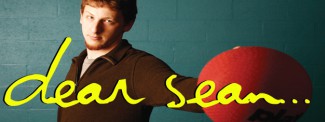Recently, our members threw down about the fault rules for the receiver. The big dispute based on this scenario.
Special rule in play was "black jack" which means that players may attempt to catch a ball before it bounces in their square in order to eject the player who last hit it. On the serve, the player in four square serves the ball cleanly into the one square. The player in one square hits the ball into two square. The player in two square catches the ball using the black jack rule which would imply that player number one is out. The player in one square claims this was a fault (we call it "one bad") and asks for the ball to be served again.
I understand where the confusion comes from. We make the fault rule here to give a little extra protection for the newest player on the court by allowing them to make a limited number of errors on their first round after a long wait in line. These errors are usually because a rule was broken, as we can read in the rules section:
"The receiver can fault on a return if she hits the ball out of bounds, into her own square or on to an inside court line. The receiver has a second chance for a serve. Both the server and the receiver are allowed only one fault, referred to as "one bad". However, if a player faults a second time then they are out. You can also remember it this way: Two bad = too bad for you!"
The way these are written, and have been published for years, it's actually pretty clear that the receiver can fault on boundaries. But there is no mention here about the player just playing poorly and not using a strategy that would prevent other players from exercising the rules of the game.
I might have to say in this case that the player in square one made no fault error, but just played poorly and allowed another player to get the better of him or her.
Making and enforcing rules in four square, a game that has one million home court rules, is tricky. It's good to poke at the rules now and then to make sure that they are clear and grow less ambiguous over time. And while reading up on the rules for this specific issue, it became clear there is a huge area which is totally ambiguous that will shortly need to be clarified. This section of the rules immediately precedes the receiver fault rules:
"Faults are allowed only once for both the server or the receiver. The server can fault if the serve into one square is too high, too low, too fast or otherwise unreturnable by the receiver. The receiver may send the ball back to be served again."
Too high, too low, too fast are subject to wide interpretation and this potentially leaves picky players with an advantage over the server and opens up too much opportunity for abuse. If any of you have some suggestions about how to create finite criteria for a "good serve" then I would love to hear it.
Until then, play nice.

